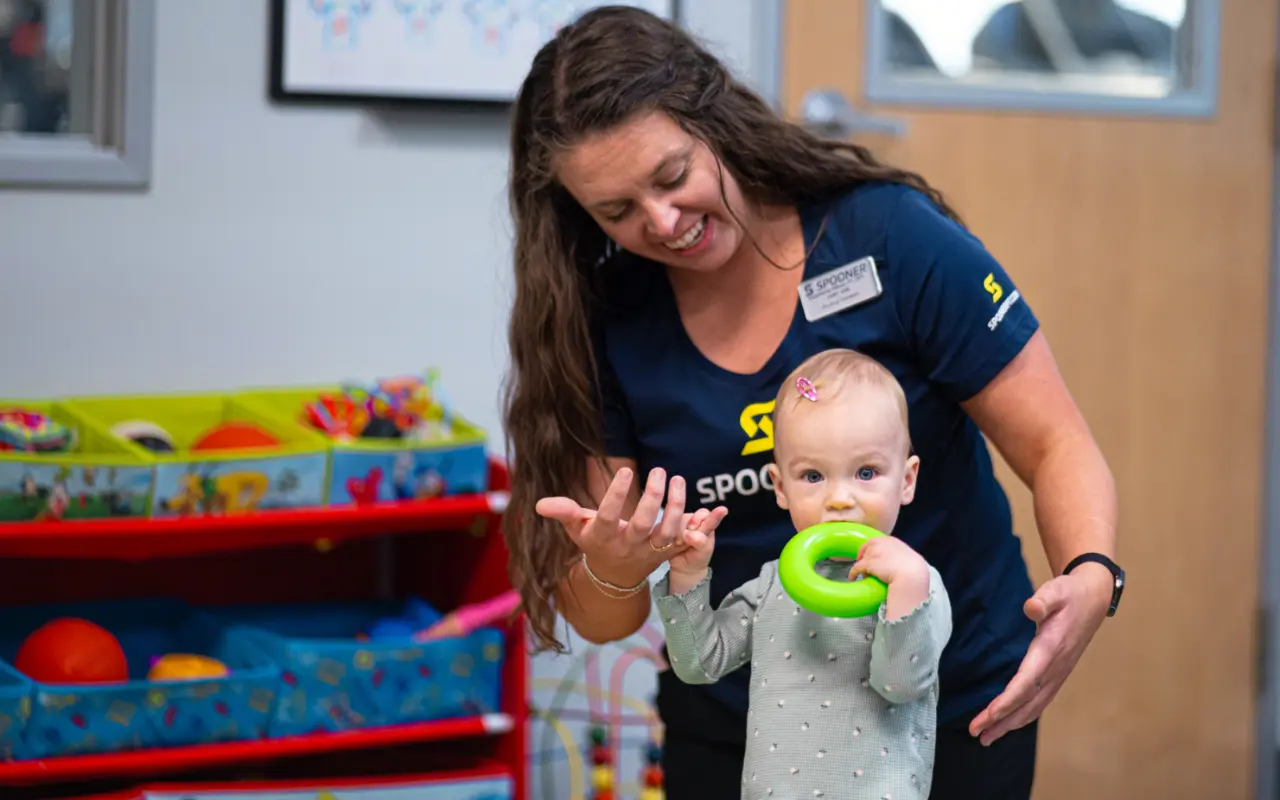By: Stephanie Gilboy, PT, DPT, Cert. VRS
When should you be concerned when your child is not hitting those age- appropriate milestones? What is important to remember when looking at your child’s milestones is there is a difference between “normal” and “typical.”
Normal can be defined by “textbook.” This essentially means that your child is meeting their milestones at the exact, limited time that textbooks state. There is not a normal baby out there. Therefore, we don’t only look at normal, since it is very rare for a child to fit into that box.
Pediatric physical therapists, then, work towards “typical,” or the child’s age match peers. We ask, What are other four-month-olds who were born in the same year, who also had torticollis, and also in daycare doing? We want to match these types of qualifiers, and it’s important to note that no child is going to be perfectly aligned with their peers.
Learn about the milestones of childhood development in “Milestones for Your Child” on the Spooner Blog!
So, when should we be concerned?
The American Academy of Pediatrics updated what the “normal” timeframes are for gross motor skill development. This is because, when they first published this timeline, they only had a select sample size. As time has passed, and a lot more babies are born, they looked at this larger sample size to widen the timeframes. This helps children to not be deemed “atypical” or behind when they were perhaps on the lower end of the timeframe.
This does mean, now, that if your child is not meeting the milestones within these updated timeframes, it is time for an assessment. For example, if your child is not sitting up by seven or eight months, or if they aren’t walking by 17-18 months, you should take them to a pediatric physical therapist and figure out what is going on.
3 Indicators
1. Asymmetry
Any asymmetries should be addressed by a pediatric physical therapist. If you are seeing something asymmetrical or unexpected- meaning your child only reaches with one hand, or they only crawl with one leg, or they only stand with one foot- these need to be addressed sooner rather than later.
Your child should be developing motor skills on both sides at nearly the same time. You could have a week or two where they prefer one side over the other, but your child should figure out symmetry quickly. So, if your child has developed a new skill, but they are only doing it on one side, that is a much sooner referral to PT than, say, a child who just started rolling at 8 months. That is within the right timeframe, but, if they are only rolling to one side, that needs to be addressed.
2. Position Refusal
If your child absolutely refuses to get into a position, like tummy time or standing, that is a delay that we want to address soon. For example, most kids are frustrated in tummy time. But the children who scream and cry until they throw up need to be looked at.
3. Glued Floor Position
Another sign we look for are children who lay flat on their back and their limbs are “glued” to the bed. They are not bringing up their hands or toes to play with them. This is one delayed motor skill that should be looked at sooner than later.
If you are concerned about your child meeting milestones, schedule an appointment with a Spooner pediatric physical therapist. We will work with you and your child to help them meet their milestones.

